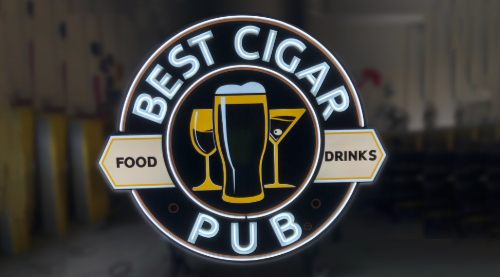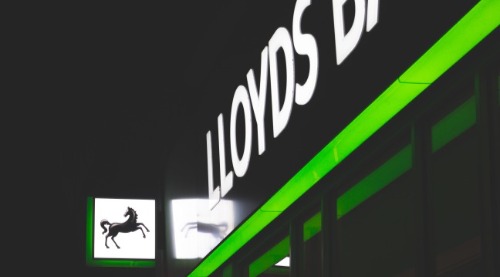 LED, or Light Emitting Diode, lighting has become a popular way to light homes, businesses, and more. But what are the benefits of switching to LED from traditional lighting? The following are 16 benefits of LED lighting:
LED, or Light Emitting Diode, lighting has become a popular way to light homes, businesses, and more. But what are the benefits of switching to LED from traditional lighting? The following are 16 benefits of LED lighting:1. Lifespan of LED
LED’s most significant advantage is its longevity. It can last up to 2-4 times longer than most fluorescent, sodium vapor lights, metal halide, and up to 40 times longer than the average incandescent bulb. LED, on average, can last 50,000 to 100,000 operating hours or more. In other words, if you left an LED bulb on for 8 hours a day it would take 20 years before you needed to replace the bulb.
2. Energy Efficiency is Superior in LED
In addition to how long LED’s can last, they consume rather low amounts of power. Compared to other blubs, LED’s use 75 percent less energy and when installed properly can boost lighting efficiency by 80 to 90 percent. Traditional bulbs, such as incandescent, also convert most of their power into heat and only about 10 percent of energy is used to actually light the space it’s supposed to. LED converts very tiny amounts of energy into heat. Making LED far more efficient.
3. Long Term Costs of LED
LED’s have a longer lifespan and consume lower amounts of power which can lead to savings in the long run. LED’s needing to be replaced less frequently cuts down on replacement costs. Additionally, their energy efficiency means that electricity bills will become lower as well. LED’s initial price continues to drop, only increasing the long-term savings to be found in using these bulbs
4. LED Has Improved safety
While traditional lights like incandescent convert power directly into heat, as mentioned previously, LED does not. Thus, the chance to burn yourself or even create hazards like fires is significantly reduced. The low-voltage of LED bulbs also allows them to operate on low voltage systems that are generally much safer.
5. Durability of LED
The durability of the LED lights goes hand and hand with the safety it provides. LED is without filaments and glass enclosures making it virtually immune to vibrations and other impacts. LED’s are more resistant to breakage because they are commonly made with epoxy lenses, not glass. These lights are not invincible. However, they fair better than traditional bulbs and avoid the possibility of getting cuts from broken glass

6. LED is Environmentally Friendly
Traditional light bulbs often require special handling at the end of their lifespan because of the mercury contained inside. LED does not have these issues, as they do not contain any mercury or any other hazardous substance. LED can simply be recycled at a qualified recycle center.
7. LED is Physically Small
A single LED device is rather small. It can be between an mm2 and a tenth of a single mm2. This size allows LED to be available to a multitude of lighting applications and it makes it highly adaptable to any design. The flexibility of LED allows it to be controlled down to the color, brightness, shade, and distribution of light. The possibilities of LED are only limited by your imagination
8. LED allows Direct Emissions
The average light emits light 360 degrees around the source. Depending upon the application, this requires the light to be reflected or redirected to where it needs to light. Thus reducing efficiency and can even drive up cost of application. LED lights only emit light 180 degrees from its source. This directional emission allows LED to be more efficient and have little need for reflectors or redirection. This additionally can cause costs to decrease, making LED the smart choice for your wallet.
9. Dimming Capability of LED
With the correct software LED can be dimmed at any percentage of power from 0 percent to 100 percent. This increases LED’s display options and can elongate the lifespan of the bulb itself. Also, as LED is dimmed, it becomes more efficient, adding to the savings to be found with LED lighting.
10. Instant Turn On and Rapid Cycling of LED
Most bulbs, such as fluorescent, don’t reach full brightness when turned on and require time to heat up before reaching maximum output. LED can reach full power instantaneously and has no re-strike delay. Traditional lights begin to degrade the more they’re switched on and off. LED lights do not have this issue and are unaffected by this rapid-cycling. This makes them a great fit for sensor lights and flashing light displays.
 11. LED Doesn’t Dim Over Time
11. LED Doesn’t Dim Over TimeTraditional lights have a tendency to lose their brightness over time. LED can maintain their original brightness over their whole lifespan. This makes LED more useful for extended periods and removing the need to replace dim bulbs.
12. Minimal UV Emissions in LED
LED can be used to light UV sensitive items without causing them to break down or degrade over time. This is because LED emits almost no ultraviolet light on the spectrum. A majority of the energy can be found on the visible spectrum. Only a small amount can be found on the infrared spectrum. Thus, LED produces next to no UV emissions.
13. LED Can Be Used Year-Round
LED can operate in a wide range of temperatures. This includes cold temperatures like those found in cold environments during the winter months. In lower temperatures, other bulbs like fluorescent can require higher voltage, but LED only preforms stronger. LED has been recorded to increase its efficiency of up to 5 percent in colder temperatures. It makes LED a good fit for refrigerated areas and outdoor lighting.
14. Color Rendering Index (CRI) of LED
CRI is a measurement of a lighting source compared to ideal lighting, natural light, and the ability to reveal the actual color of an object. LED lighting has a CRI of between 65 and 95 which is considered exceptional. High CRI is something to seek depending upon its application.
15. LED Can Offer Different Color Temperatures
LED can be purchased with a wide range of colors, including base colors of red, blue, and amber. LED can range from cool white light to a warm yellowish glow. While traditional bulbs create color with filters that can be extremely harmful, LED can be mixed together to make numerous color options.
16. LED Produces No Noise
LED over time will not output any clicking or flickering sounds. They operate silently, unlike other lights like fluorescent. With proper installation LED lights will have no problem emitting only light and not distracting sound.
LED lighting is continuously growing and improving and could be a great solution for your lighting needs. Traditional lighting cannot compare to LED lighting’s longevity and long-term costs. The savings to be found with LED paired with improved safety and being environmentally friendly make LED lighting the perfect type of lighting to consider. It’s small design and limitless lighting capabilities could be just what you need. Take a look at LED lighting solutions we offer today.


